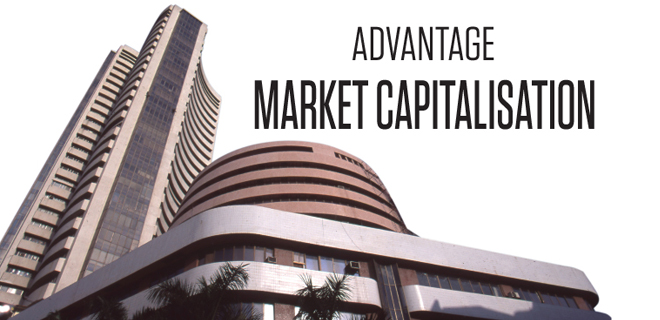Worrying signs
While the PE does look high, earnings is low as corporate India’s ROE is yet to revert to its long-term average

As much as fund managers would shy away from accepting the fact, many of them are today grappling with high cash reserves. The two reasons when fund managers hoard cash are – when they do not see opportunities or when they sense a higher than usual redemption. The lack of opportunity is triggered by high valuations today. There is no doubt that market valuations have gone up considerably in the recent months. The price to earnings ratio (PE) is the indicator of valuation, which is the ratio of the market price of a stock or index to its earning per share.
The current PE of Sensex is 22-23, which indicates that the market is overvalued, as the PE of a fairly valued market is around 17-19. Some experts are of the view that to blindly bracket the markets being over valued based on the PE alone is an incorrect assessment. There is merit in this argument because, going by the past, when the markets were at higher PEs, the economic indicators were different; especially the twin deficits, inflation and crude prices.
This time around it is different, including the constituents of the Sensex. So, one should not overly be focused on the PE levels to gauge the valuation of the markets. Moreover, market returns are a function of macros, future earnings growth and interest rates and flows—all of these, barring recovery in earnings, are favourable at the moment. While the PE does look high, at the moment, earnings is low as corporate India’s ROE (return on equity) is yet to revert to its long-term average. But this is expected to change over the next few quarters.
“We do believe that at the index level valuations look rich, but we continue to find attractive opportunities from a bottom-up perspective. Certain pockets across market caps are rich and investors should be wary of low quality stocks which have also run up,” emphasises, S Krishna Kumar, CIO-Equity, & Executive Vice President, Sundaram Asset Management. Similar views are aired by several other money managers, who are either going easy with their investments or in some cases changing their investment strategy to cope with the present times.
“Since the markets have run up and money is coming in, the managers are exercising prudence in deploying cash. Whenever there are opportunities in need for growth; capital or corrections in stocks, the cash will be deployed,” explains Patil. But the reason for holding on to cash, many acknowledge privately, is to do with high valuations which is making several fund managers a wee bit uncomfortable about investing at the moment.
“The market is no longer cheap, as can be gauged from various matrices. On a price-to earnings basis, the market is expensive while on a price-to-book and market cap to GDP basis, it is courting slightly above its long term averages,” stresses Naren. The other aspect that cannot be ruled out is volatility, which could impact the momentum and also change investor behaviour. The monsoon is not over yet to ascertain clearly how well it has been. Likewise, the net margins of a bulk of the CNX 500 companies have been weak, even when they have delivered healthy operating and net profit margins.
“One of the reasons of high valuations is that the corporate profitability is up high also the markets are expecting recovery in profit earnings over the next year. Moreover, while comparing the valuations at historical levels, one needs to keep in mind the falling interest rates sustainability,” explains Navneet Munot, ED & CIO, SBI Mutual Fund.
The bright side
“Domestically, consumption – a key growth driver – has been recovering post the disruption during demonetisation. Strong public infrastructure spending at central and state level and government’s focus on capital spending should enhance productivity going forward,” says Anand Radhakrishnan, CIO – Franklin Equity, Franklin Templeton Investments – India. Moreover, once banks resolve the NPA mess, things will further look better for the economy and the markets.
Singhania is positive on the domestic recovery themes which can benefit significantly from lower interest rates, higher disposable income and policy reforms. “Under rural and urban consumption themes we like auto, hospitality and organised retail,” he says. He is also positive on high quality engineering companies, niche NBFCs, insurance and agro chemical sectors as these are expected to benefit from policy reforms. The housing sector has so far been muted, despite the ‘Housing for All’ drive before 2022. It will change once the RERA (Real Estate (Regulation and Development) Act) comes in force and developers get their act in place.
“In the entire consumption story today, a large part comes from rural India, and good monsoon can help boost farm income, which will in turn give impetus to the consumption story,” believes Ravi Gopalakrishnan, Head Equities – Canara Robeco AMC. He is equally gung-ho on the consumer discretionary sector—predominantly auto and auto ancillaries because he believes that the demand is expected to kick-in with above average monsoon. “We believe that the momentum in this sector that has been built-up in the last several years will continue as the wealth effect starts to emerge from the rural economy,” he adds.
“The successful implementation of the GST and earnings upgrades will be triggers in the near term to look,” feels, Tushar Pradhan, CIO, HSBC Mutual Fund. He feels the value-oriented approach to identify opportunities in stocks that trade at relatively lower valuations vis-à-vis others offering similar profitability should be looked into as investments.
Investors are also catching up to the detailed investment outlook shared by fund managers from time-to-time. “My current approach is to hold on to the equities in the portfolio and keep an eye out on equities that have corrected but hold great fundamentals, trade at an attractive P/E or valued below its Book Value,” rattles off 33-year-old, Bengaluru-based Gautam Samtani. He invests in both mutual funds and stocks and makes it a point to read up on factors that influence the stock markets.
Read: Many investors burn their fingers by investing when the markets are at an all time high









